
8th Annual AAC Conference
The ADA Headquarters Building / Conference Center, 211 E. Chicago Ave., Chicago, IL 60611
Thursday and Friday, September 19th – 20th, 2024
Description & Goals
This two-day conference aims to gather dental professionals to discuss the latest advances and innovations in the diagnosis, detection, and management of dental caries, focusing on integrating technology and patient-centered approaches. Key concepts will be understanding progress in caries detection, familiarity with modern imaging technology, management strategies for diverse populations, evaluation of alternative caries management options, and how to combat misinformation. Participants will learn about the historical and current approaches to diagnosing dental caries and how clinical practices have evolved with advances in technology with critical analysis of benefits and limitations within clinical settings. The conference will cover strategies for the non-invasive management of caries, specifically for special needs patients. The efficacy and use of Silver Diamine Fluoride (SDF) and povidone-iodine in mainstream caries management will be discussed, highlighting recent updates and research findings. Finally, a session on social media myths and truths intends to empower dental professionals to recognize and correct misinformation about dental caries that patients may encounter online. Through review of posters and panel discussions and Q&A sessions, participants can discuss clinical cases, share experiences, and seek expert opinions on complex clinical scenarios. Overall, the conference will foster an environment of learning and collaboration, encouraging the adoption of advanced methods for caries management and ultimately contributing to better dental healthcare delivery.
10.75 CDE credits (Symposium 1.5; Conference Day 1, Thursday 4.0; Conference Day 2, Friday 5.25)
Thursday, September 19, 2024
Pre-Meeting Academic Symposium
9:45 - 10:00 am
Pickup name badges (Hillenbrand Auditorium)
10:00 - 11:30 am
Introduction to the use of Generative AI in Dental (Cariology) Education
This educational program aims to familiarize participants with the application of generative artificial intelligence (GenAI) in the field of dental education, with an emphasis on teaching cariology. The program will discuss the transformative potential of GenAI in dental student education. Presenters will demonstrate its practical applications using real-world experience in using GenAI tools for tasks such as crafting learning objectives, designing engaging presentations, developing clinical teaching scenarios, composing exam questions, and using chatbots to enhance student learning.
SPEAKER: Dr. Carlos González-Cabezas (AAC President) and Dr. Margherita Fontana (University of Michigan)
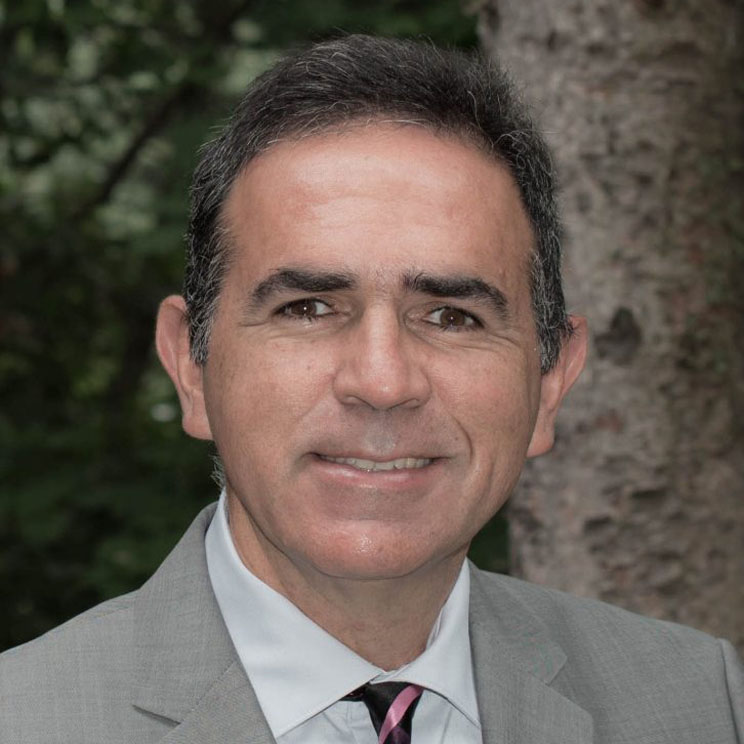
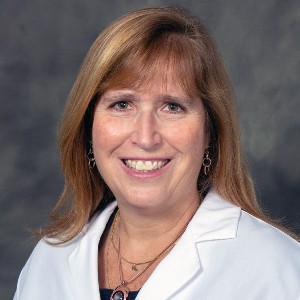
Lunch (On your own)
-
Pickup name badges (Hillenbrand Auditorium)
-
Introduction to the use of Generative AI in Dental (Cariology) Education
This educational program aims to familiarize participants with the application of generative artificial intelligence (GenAI) in the field of dental education, with an emphasis on teaching cariology. The program will discuss the transformative potential of GenAI in dental student education. Presenters will demonstrate its practical applications using real-world experience in using GenAI tools for tasks such as crafting learning objectives, designing engaging presentations, developing clinical teaching scenarios, composing exam questions, and using chatbots to enhance student learning.
SPEAKER: Dr. Carlos González-Cabezas (AAC President) and Dr. Margherita Fontana (University of Michigan)


-
Lunch (On your own)
Conference Program - Beginning of Conference
12:45 - 1:00 pm
Pickup name badges (Hillenbrand Auditorium)
1:00 - 1:15 pm

Welcome and Overview of the Program
SPEAKER: (Dr. Carlos González-Cabezas, AAC President)
1:15 - 1:50 pm
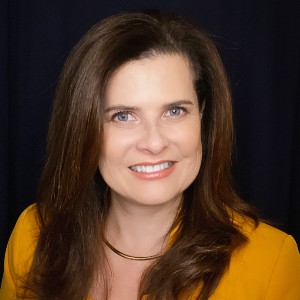
Harnessing caries activity assessment for precision caries management
This presentation will explore the pivotal role of caries activity assessment in contemporary caries management. Attendees will learn how assessing the activity of carious lesions provides a more comprehensive understanding of disease progression and risk, facilitating tailored treatment decisions. By integrating activity assessment into clinical practice, dentists can better differentiate between active and arrested lesions, guiding interventions that optimize patient outcomes and support minimally invasive treatment approaches.
SPEAKER: Dr. Andrea Ferreira Zandona (Ohio State University)
1:50 - 2:00 pm
Q&A
2:00 - 2:35 pm
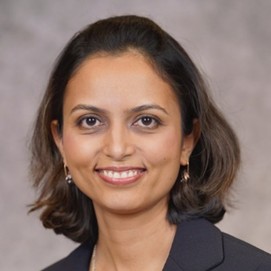 CBCT and artificial intelligence in radiographic detection of dental caries: current status
CBCT and artificial intelligence in radiographic detection of dental caries: current status
Diagnosis of dental caries is the most common and still the most difficult diagnostic procedure in dentistry. Is it getting easier with the advent of new technologies like CBCT and AI? Join a board certified Oral & Maxillofacial Radiologist with over 15 years of diagnostic and research experience to explore the pros and cons of various radiographic techniques in diagnosis of dental caries.
SPEAKER: Dr. Rujuta Katkar (University of Texas Health Science Center at San Antonio)
2:35 - 2:45 pm
Q&A
2:45 - 3:00 pm
Coffee Break
3:00 - 3:35 pm
 Advancing caries detection and diagnosis with new technologies
Advancing caries detection and diagnosis with new technologies
With the advent of minimal intervention dentistry (MID), came the need for technologies to aid in detection, diagnosis, and monitoring, particularly of the initial caries lesions. Successful implementation of MID has led to the development of more sophisticated technologies. This presentation will discuss newer technologies that can detect as well as monitor the activities of a caries lesion over time.
SPEAKER: Dr. Bennett Amaechi (University of Texas Health Science Center at San Antonio)
3:35 - 3:45 pm
Q&A
3:45 - 4:20 pm
Panel Discussion
Moderators: Dr. Anchal Malik and Dr. Marcelle Nascimento
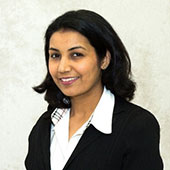
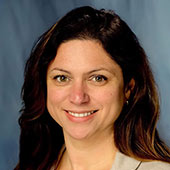
4:20 - 4:30 pm
Break
4:30 - 5:15 pm
AAC Business Meeting
5:30 - 7:30 pm
Social Reception with hors d’oeuvres and drinks (Meeting rooms 2BCDE)
-
Pickup name badges (Hillenbrand Auditorium)
-

Welcome and Overview of the Program
SPEAKER: (Dr. Carlos González-Cabezas, AAC President)
-

Harnessing caries activity assessment for precision caries management
This presentation will explore the pivotal role of caries activity assessment in contemporary caries management. Attendees will learn how assessing the activity of carious lesions provides a more comprehensive understanding of disease progression and risk, facilitating tailored treatment decisions. By integrating activity assessment into clinical practice, dentists can better differentiate between active and arrested lesions, guiding interventions that optimize patient outcomes and support minimally invasive treatment approaches.
SPEAKER: Dr. Andrea Ferreira Zandona (Ohio State University)
-
Q&A
-
 CBCT and artificial intelligence in radiographic detection of dental caries: current status
CBCT and artificial intelligence in radiographic detection of dental caries: current statusDiagnosis of dental caries is the most common and still the most difficult diagnostic procedure in dentistry. Is it getting easier with the advent of new technologies like CBCT and AI? Join a board certified Oral & Maxillofacial Radiologist with over 15 years of diagnostic and research experience to explore the pros and cons of various radiographic techniques in diagnosis of dental caries.
SPEAKER: Dr. Rujuta Katkar (University of Texas Health Science Center at San Antonio)
-
Q&A
-
Coffee Break
-
 Advancing caries detection and diagnosis with new technologies
Advancing caries detection and diagnosis with new technologiesWith the advent of minimal intervention dentistry (MID), came the need for technologies to aid in detection, diagnosis, and monitoring, particularly of the initial caries lesions. Successful implementation of MID has led to the development of more sophisticated technologies. This presentation will discuss newer technologies that can detect as well as monitor the activities of a caries lesion over time.
SPEAKER: Dr. Bennett Amaechi (University of Texas Health Science Center at San Antonio)
-
Q&A
-
Panel Discussion
Moderators: Dr. Anchal Malik and Dr. Marcelle Nascimento


-
Break
-
AAC Business Meeting
-
Social Reception with hors d’oeuvres and drinks (Meeting rooms 2BCDE)
Friday, September 20, 2024
8:00 - 8:20 am
Coffee and Light Breakfast
8:20 - 8:30 am

Welcome
SPEAKER: (Dr. Carlos González-Cabezas, AAC President)
8:30 - 9:05 am
 Interim caries management on the road to the operating room: a non-invasive management pathway for patients with special healthcare needs
Interim caries management on the road to the operating room: a non-invasive management pathway for patients with special healthcare needs
This presentation will address key points in caries risk assessment and overall management of a diverse demographic of patients with special healthcare needs (SHCNs), including oral diagnosis and management employed in cases treated in an outpatient setting that later require definitive treatment in an operating room setting under general anesthesia. In addition, the elements of the special needs patient encounter will be introduced.
SPEAKER: Dr. Stephanie Munz (University of Michigan)
9:05 - 9:15 am
Q&A
9:15 - 9:30 am
Coffee Break
9:30 - 10:05 am
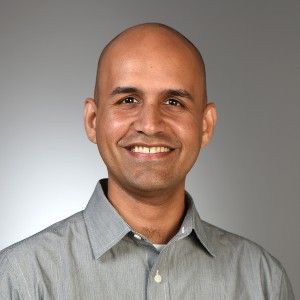 Diagnosing and treating hyposalivation to reduce the risk for dental caries
Diagnosing and treating hyposalivation to reduce the risk for dental caries
Hyposalivation and dry mouth affect people in all age groups but are more frequently seen among older adults, those with a history of irradiation to the head and neck region and as a consequence of polypharmacy for chronic health conditions. The condition significantly affects an individual’s quality of life and one of its more visible effects is in the development and progression of dental caries. This presentation will provide a detailed overview of hyposalivation and the current evidence on various techniques proposed to manage the condition.
SPEAKER: Dr. Rohit Nair (University of Iowa)
10:05 - 10:15 am
Q&A
10:15 - 11:00 am
Panel Discussion
Moderators: Dr. Teresa Marshall and Dr. Livia Tenuta
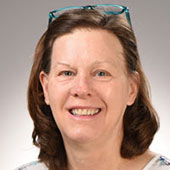
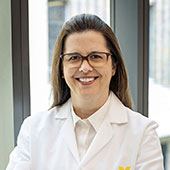
11:00 - 11:45 am
Poster Session (Hillenbrand Auditorium)
|
Name |
Poster Title |
|
Kristin Adair |
Water’s effect on dental biofilm pH following fermentable carbohydrate: a scoping review. |
|
Brecken Blackburn |
Brillouin spectroscopy for assessment of enamel demineralization. |
|
Junio Castro |
Silver-diamine fluoride and its combination with potassium-iodide exhibit different anti-caries properties. |
|
Louise Dornelas-Figueira |
GlcNAc enhances the probiotic properties of Streptococcus sanguinis against Streptococcus mutans-Candida albicans. |
|
Jonathon Dougherty |
Physiological properties of salivary stimulants: evaluation of pH and titratable acidity. |
|
Duangporn Duangthip |
Clinical trials of silver diamine fluoride with light curing in arresting caries. |
|
Elham Fawzi |
Comprehensive dental status (CDS) index for oral wellness: preliminary results. |
|
Karl Hall |
Early-stage caries detection by fluorescein starch nanoparticle rine — in-vitro pilot. |
|
Daniel Han |
Methods used for caries detection and diagnosis in Ontario: an exploratory survey. |
|
Nathan Jones |
Where does the mineral go? Evaluating spatial distributions of caries remineralization treatments. |
|
Callahan Katrak |
Exploring synergistic oxidative stress tolerance between Candida albicans and Streptococcus mutans. |
|
José Neves |
Type-B proanthocyanidins Designer enhance root caries remineralization. |
|
Malgorzata Pawinska |
Use of NIR-light laser transillumination for assessing the cariostatic effect of toothpastes. |
|
Sonali Sharma |
Biophotonics aided caries inhibition : a validated standardized clinical protocol. |
|
Leonardo Teodosio |
Radiotherapy increases the dentin susceptibility to in vitro caries development. |
|
Elaine Yoshino |
Combination of conventional or high-fluoride toothpastes with fluoride rinse: fluoride bioavailability study. |
11:45 - 1:15 pm
Lunch (Lunch is provided – Meeting roomes 2BCDE)
1:15 - 1:45 pm
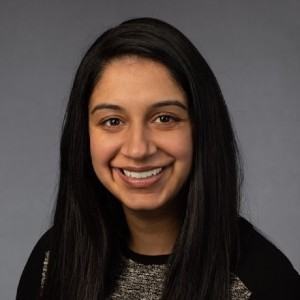 A tooth’s silver lining: an update on SDF
A tooth’s silver lining: an update on SDF
Silver Diamine Fluoride (SDF) has become a popular treatment modality for minimally-invasive caries management. This presentation will review the latest evidence on SDF including that of the NIH-sponsored, phase III randomized clinical trial on the effectiveness of SDF to arrest cavitated lesions in pre-school children with severe Early Childhood Caries. Attendees will gain insight into the trial design and how it was conducted as well as review the latest on SDF in terms of use including prevention in the current literature.
SPEAKER: Dr. Divya Khera (New York University)
1:45 - 2:15 pm
 Is povidone iodine ready for mainstream caries management?
Is povidone iodine ready for mainstream caries management?
Dental caries is one of the most prevalent chronic non-communicable diseases and among the most common unmet healthcare needs of poor and minority population groups. This presentation will discuss the clinical evidence on povidone iodine for caries management and some examples of ongoing clinical studies.
SPEAKER: Dr. Margherita Fontana (University of Michigan)
2:15 - 2:45 pm
Panel Discussion
Moderators: Dr. Richard Niederman and Dr. Apoena Ribeiro
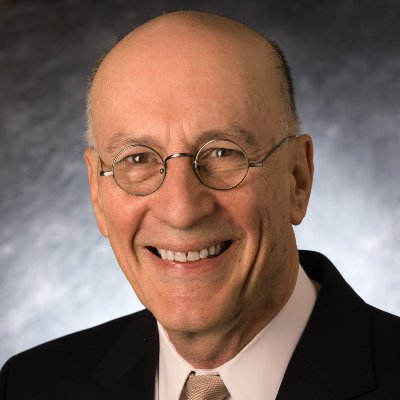

2:45 - 3:00 pm
Coffee Break
3:00 - 4:00 pm
Social Media Myths and Truths
Join us for an interactive session where we will address some myths and truths found on social media by patients, and their impact on dental practices. We will discuss common misconceptions that patients encounter online and provide some strategies for effectively communicating accurate information while addressing patient concerns.
Speaker Panel
4:00 - 4:05 pm
Conference Conclusion
-
Coffee and Light Breakfast
-

Welcome
SPEAKER: (Dr. Carlos González-Cabezas, AAC President)
-
 Interim caries management on the road to the operating room: a non-invasive management pathway for patients with special healthcare needs
Interim caries management on the road to the operating room: a non-invasive management pathway for patients with special healthcare needsThis presentation will address key points in caries risk assessment and overall management of a diverse demographic of patients with special healthcare needs (SHCNs), including oral diagnosis and management employed in cases treated in an outpatient setting that later require definitive treatment in an operating room setting under general anesthesia. In addition, the elements of the special needs patient encounter will be introduced.
SPEAKER: Dr. Stephanie Munz (University of Michigan)
-
Q&A
-
Coffee Break
-
 Diagnosing and treating hyposalivation to reduce the risk for dental caries
Diagnosing and treating hyposalivation to reduce the risk for dental cariesHyposalivation and dry mouth affect people in all age groups but are more frequently seen among older adults, those with a history of irradiation to the head and neck region and as a consequence of polypharmacy for chronic health conditions. The condition significantly affects an individual’s quality of life and one of its more visible effects is in the development and progression of dental caries. This presentation will provide a detailed overview of hyposalivation and the current evidence on various techniques proposed to manage the condition.
SPEAKER: Dr. Rohit Nair (University of Iowa)
-
Q&A
-
Panel Discussion
Moderators: Dr. Teresa Marshall and Dr. Livia Tenuta


-
Poster Session (Hillenbrand Auditorium)
Name
Poster Title
Kristin Adair
Water’s effect on dental biofilm pH following fermentable carbohydrate: a scoping review.
Brecken Blackburn
Brillouin spectroscopy for assessment of enamel demineralization.
Junio Castro
Silver-diamine fluoride and its combination with potassium-iodide exhibit different anti-caries properties.
Louise Dornelas-Figueira
GlcNAc enhances the probiotic properties of Streptococcus sanguinis against Streptococcus mutans-Candida albicans.
Jonathon Dougherty
Physiological properties of salivary stimulants: evaluation of pH and titratable acidity.
Duangporn Duangthip
Clinical trials of silver diamine fluoride with light curing in arresting caries.
Elham Fawzi
Comprehensive dental status (CDS) index for oral wellness: preliminary results.
Karl Hall
Early-stage caries detection by fluorescein starch nanoparticle rine — in-vitro pilot.
Daniel Han
Methods used for caries detection and diagnosis in Ontario: an exploratory survey.
Nathan Jones
Where does the mineral go? Evaluating spatial distributions of caries remineralization treatments.
Callahan Katrak
Exploring synergistic oxidative stress tolerance between Candida albicans and Streptococcus mutans.
José Neves
Type-B proanthocyanidins Designer enhance root caries remineralization.
Malgorzata Pawinska
Use of NIR-light laser transillumination for assessing the cariostatic effect of toothpastes.
Sonali Sharma
Biophotonics aided caries inhibition : a validated standardized clinical protocol.
Leonardo Teodosio
Radiotherapy increases the dentin susceptibility to in vitro caries development.
Elaine Yoshino
Combination of conventional or high-fluoride toothpastes with fluoride rinse: fluoride bioavailability study.
-
Lunch (Lunch is provided – Meeting roomes 2BCDE)
-
 A tooth’s silver lining: an update on SDF
A tooth’s silver lining: an update on SDFSilver Diamine Fluoride (SDF) has become a popular treatment modality for minimally-invasive caries management. This presentation will review the latest evidence on SDF including that of the NIH-sponsored, phase III randomized clinical trial on the effectiveness of SDF to arrest cavitated lesions in pre-school children with severe Early Childhood Caries. Attendees will gain insight into the trial design and how it was conducted as well as review the latest on SDF in terms of use including prevention in the current literature.
SPEAKER: Dr. Divya Khera (New York University)
-
 Is povidone iodine ready for mainstream caries management?
Is povidone iodine ready for mainstream caries management?Dental caries is one of the most prevalent chronic non-communicable diseases and among the most common unmet healthcare needs of poor and minority population groups. This presentation will discuss the clinical evidence on povidone iodine for caries management and some examples of ongoing clinical studies.
SPEAKER: Dr. Margherita Fontana (University of Michigan)
-
Panel Discussion
Moderators: Dr. Richard Niederman and Dr. Apoena Ribeiro


-
Coffee Break
-
Social Media Myths and Truths
Join us for an interactive session where we will address some myths and truths found on social media by patients, and their impact on dental practices. We will discuss common misconceptions that patients encounter online and provide some strategies for effectively communicating accurate information while addressing patient concerns.
Speaker Panel
-
Conference Conclusion
Hotels
The AAC has not reserved hotel room blocks for this conference due to the variety of hotels available in the area near the venue (The ADA Headquarters Building / Conference Center, 211 E. Chicago Ave, Chicago, IL 60611). Please plan to arrange for your own accommodations for your stay in Chicago.
For reference only, you may find useful information on the following website sponsored by the Magnificent Mile Association (https://www.themagnificentmile.com/hotels/#types=2&view=map-view&load=40). The AAC has no association whatsoever with the Magnificent Mile Association, and does not recommend, endorse, or have responsibility for the content of its website.
Register for the American Academy of Cariology Meeting Now!
Please select a valid formHotel Reservations
Rooms in the Westin San Diego Gaslamp Quarter Hotel are available to AAC attendees at conference rates (and will appear under the name of the ADM).
Reserve A Room